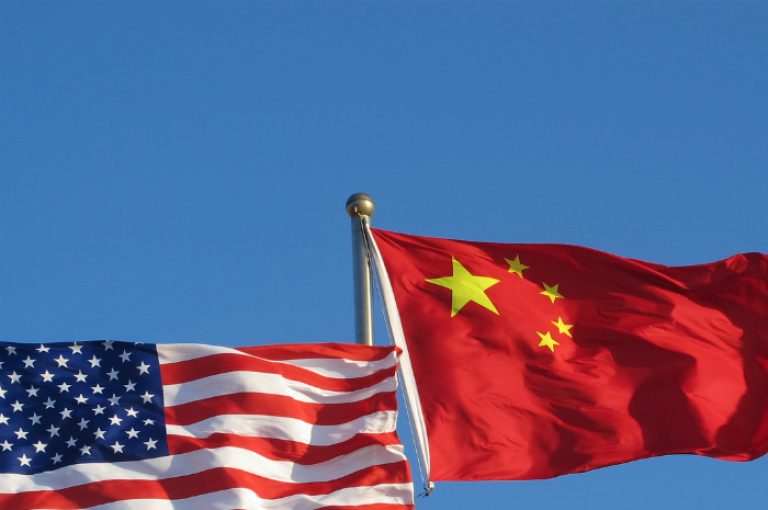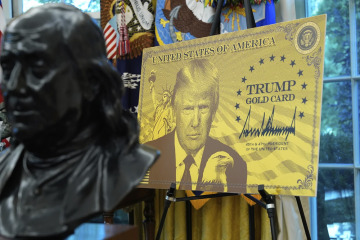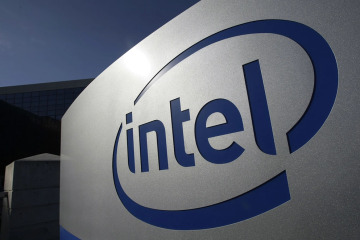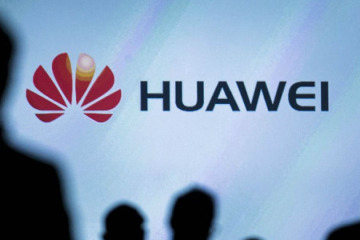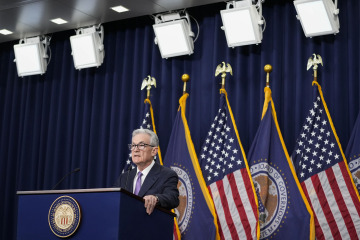Shanghai, August 28, 2023 — Commerce Secretary Gina Raimondo on Wednesday said she warned Chinese leaders that U.S. businesses might stop investing in their country without prompt action to address complaints about worsening conditions due to raids on firms, unexplained fines and unpredictable official behavior.
Raimondo’s comments add to pressure on Chinese leader Xi Jinping’s government, which is trying to revive investor interest and reverse an economic slump. Business groups say confidence among foreign companies is at an all-time low. Official figures show foreign investment plunged in the latest quarter.
Raimondo visited Beijing as part of U.S. efforts to restore relations that plummeted to their lowest level in decades due to disputes about technology, security, Taiwan and other issues. She called her meetings with China’s No. 2 leader, Premier Li Qiang, and other officials “very productive” but said she “didn’t pull any punches” in conveying business complaints.
Raimondo said CEOs ahead of her trip told her they face increased pressure from Beijing’s expansion of an anti-spying law this year, raids on some firms, tighter controls on data and lack of information about rule changes.
“My point was U.S. business needs to see some action taken to address these issues. Otherwise, they will deem it as just too risky and, as I said, uninvestable,” Raimondo told reporters at a Boeing Co. joint venture in Shanghai’s eastern district of Pudong.
Foreign direct investment in China fell 89% from a year earlier in the three months ending in June, according to official data. Most investment is believed to be brought into the country by Chinese companies disguised as foreign money to get tax breaks and other incentives, but business groups have warned foreign companies are withholding new spending until their status is clearer.
“Patience is wearing thin,” Raimondo said. She said conditions for companies that have complained for years about technology theft and official favoritism toward Chinese competitors are “becoming in some ways even tougher.”
Economic growth slid to 0.8% compared with the previous quarter in the three months ending in June from the January-March period’s 2.2%. That is equal to an annual rate of 3.2%, which would be among China’s weakest in decades.
Despite that, Li, the premier, has expressed confidence the economy can hit the ruling party’s annual growth target of “about 5%.”
Raimondo said she welcomed moves such as the ruling party’s announcement of a 24-point plan to improve conditions for entrepreneurs. She said the party secretary for Shanghai, Chen Jining, told her Wednesday the city was considering creating a hotline to receive business complaints.
“We have to see the situation on the ground match the rhetoric,” Raimondo said.
Raimondo’s visit produced the most substantial results of a series of trips to Beijing over the past three months by U.S. officials including Secretary of State Antony Blinken in June and Treasury Secretary Janet Yellen last month.
The two governments announced Monday they would form two groups to reduce trade tension by sharing information about U.S. export controls on technology that irritate Beijing and discuss other commercial disputes. They also agreed to have officials meet to discuss protection of trade secrets and to hold a “travel and tourism summit.”
Beijing broke off dialogue with Washington over military, climate and other issues in August 2020 in retaliation for a visit to Taiwan by then-House Speaker Nancy Pelosi. The ruling party claims the self-ruled island democracy as part of its territory and objects to foreign official contacts.
Relations already were strained by a tariff war launched by then-President Donald Trump over complaints including that Beijing steals or pressures companies to hand over technology.
Li appealed to Raimondo on Tuesday for “concrete actions” by Washington to improve relations, a reference to Chinese pressure for changes in U.S. policy on Taiwan, technology and other issues.
Washington has blocked Chinese access to processor chips and other technology on security grounds. That threatens to hamper the ruling party’s ambitions to create artificial intelligence and other industries. Xi accused Washington in March of trying to block China’s development.
The group held its first meeting Tuesday. Raimondo said it would meet several more times. She said the meetings are intended to provide information and won’t result in changes to U.S. export controls.
“We were able to clarify in the first meeting that we’re not targeting China,” Raimondo said. “We’re targeting action and behavior which undermine U.S. national security, and we sought to begin clarifying our procedures.”
Export controls “will continue to be the area of the most disagreement, but communication can only help,” Raimondo said.
Conditions for foreign companies have worsened following the expansion of an anti-spying law that some say leaves them unclear about what consumer and other information they can gather. A research firm, Mintz Group, was fined $1.5 million this month on charges it improperly gathered data. China ordered makers of some data equipment to stop using products from the biggest U.S. maker of memory chips, Micron Inc., on security grounds.
The secretary said she raised the status of Visa and Mastercard as an example of the need to treat each other’s companies the same way. The credit card issuers have waited for years for approval of applications to operate in China, while Chinese payment services Alipay and UnionPay operate freely in the United States.
“We did not resolve anything, but I thought that it was important to put the issue on the table,” Raimondo said. “And I did feel heard.”
In a phone call later with reporters, Raimondo said she mentioned to Chinese officials that her own emails were stolen by computer hackers. She said nothing about the source, but The Washington Post reported in July that she and Blinken were targets of state-backed Chinese hackers.
“I mentioned that as an action that erodes trust,” she said. – AP
US economic growth for last quarter is revised down to a 2.1% annual rate
WASHINGTON (AP) — The U.S. economy expanded at a 2.1% annual pace from April through June, showing continued resilience in the face of higher borrowing costs for consumers and businesses, the government said Wednesday in a downgrade from its initial estimate.
The government had previously estimated that the economy expanded at a 2.4% annual rate last quarter.
The Commerce Department’s second estimate of growth last quarter marked a slight acceleration from a 2% annual growth rate from January through March. Though the economy has been slowed by the Federal Reserve’s strenuous drive to tame inflation with interest rate hikes, it has managed to keep expanding, with employers still hiring and consumers still spending.
Wednesday’s report on the nation’s gross domestic product — the total output of goods and services — showed that growth last quarter was driven by upticks in consumer spending, business investment and outlays by state and local governments.
Consumer spending, which accounts for about 70% of the U.S. economy, rose at a 1.7% annual pace in the April-June quarter — a decent gain, though down from 4.2% in the first three months of 2023. Excluding housing, business investment rose at a strong 6.1% annual rate last quarter. Investment in housing, hurt by higher mortgage rates, fell in the second quarter.
The American economy — the world’s largest — has proved surprisingly durable in the midst of the Fed’s aggressive campaign to stamp out a resurgence of inflation, which last year hit a four-decade high. Since March of last year, the Fed has raised its benchmark rate 11 times, making borrowing for everything from cars to homes to business expansions much more expensive and prompting widespread predictions of a coming recession.
Since peaking at 9.1% in June 2022, year-over-year inflation has fallen more or less steadily. Last month, it came in at 3.2% — a significant improvement though still above the Fed’s 2% inflation target. Excluding volatile food and energy costs, so-called core inflation in July matched the smallest monthly rise in nearly two years.
Wednesday’s GDP report contained some potentially encouraging news for the Fed: One measure of prices — the personal consumption expenditures index — rose at a 2.5% annual rate last quarter, down from a 4.1% pace in the January-March quarter and the smallest increase since the end of 2020.
Since the Fed began raising rates, the economy has been bolstered by a consistently healthy job market. Employers have added a robust average of 258,000 jobs a month this year, though that average has slowed over the past three months to 218,000.
On Tuesday, a report from the government added to evidence that the job market is gradually weakening: It showed that employers posted far fewer job openings in July and that the number of people who quit their jobs tumbled for a second straight month. (When fewer people quit their jobs, it typically suggests that they aren’t as confident in finding a new one.)
Still, job openings remain well above their pre-pandemic levels. The nation’s unemployment rate, at 3.5%, is still barely above a half-decade low. And when the government issues the August jobs report on Friday, economists polled by the data firm FactSet think it will show that while hiring slowed, employers still added 170,000 jobs.
The combination of tumbling inflation, continued economic growth and slower but steady hiring has raised hopes for a rare “soft landing.” That’s a scenario in which the Fed manages to conquer high inflation without causing a painful recession.
Wednesday’s government report, its second of three estimates of last quarter’s growth, will be followed by a final calculation late next month. – AP
10 drugs targeted for Medicare price negotiations as Biden pitches cost reductions
WASHINGTON (AP) — President Joe Biden touted the potential cost savings of Medicare’s first-ever price negotiations for widely used prescription drugs on Tuesday as he struggles to convince Americans that he’s improved their lives as he runs for reelection.
The drugs include the blood thinner Eliquis, diabetes treatment Jardiance and eight other medications. The negotiation process was authorized under the Inflation Reduction Act, which Biden signed last year, capping decades of debate over whether the federal government should be allowed to haggle with pharmaceutical companies.
Any lower prices won’t take effect for three years, and the path forward could be further complicated by litigation from drugmakers and heavy criticism from Republicans.
But the effort is a centerpiece of Biden’s reelection pitch as the Democrat tries to show Americans he’s deserving of a second term because of the work he’s doing to lower costs while the country is struggling with inflation. The drug negotiations, like many of Biden’s biggest policy moves, will take time to play out, and his challenge is to persuade the public to be patient.
“For all of you out there, I get it, and millions of Americans get it,” Biden said at the White House. “I promise you. I’m going to have your back and I’ll never stop fighting for you on this issue.”
He noted that he got “no help from the other team” — meaning Republicans — when it came to lowering prescription costs.
The drugs on the list announced Tuesday accounted for $3.4 billion in out-of-pocket costs for Medicare patients last year.
The Medicare program paid more than $50 billion for the drugs between June 1, 2022, and May 31, according to the Centers for Medicare and Medicaid Services, or CMS.
That includes more than $16 billion on Eliquis, a total that does not count discounts or rebates that are already negotiated for the drug. The drug from Pfizer and Bristol-Myers Squibb treats blood clots in the legs and lungs and reduces the risk of stroke in people with an irregular heartbeat called atrial fibrillation.
The diabetes treatments Jardiance from Eli Lilly and Co. and Boehringer Ingelheim and Januvia from Merck made the list. It also included Amgen’s autoimmune disease treatment Enbrel and Entresto from Novartis, which is used to treat heart failure.
Other drugs on the list include AstraZeneca’s diabetes and heart failure treatment Farxiga and three drugs from Johnson & Johnson: the blood thinner Xarelto, the blood cancer treatment Imbruvica and it’s biggest seller, Stelara, an IV treatment for psoriasis and other inflammatory disorders.
The list also includes several versions of Novo Nordisk’s Fiasp, a fast-acting insulin taken around meals.
The announcement Tuesday is another significant step toward taming drug pricing under the Inflation Reduction Act, which was signed by Biden last year. The law also calls for a $2,000 annual cap on how much people with Medicare have to pay out of pocket for drugs starting in 2025.
In addition, the law already caps out-of-pocket costs for insulin at $35 a month for Medicare patients.
“We are here today with the firm belief that in the United States of America, no senior should have to choose between whether they fill their prescription or fill their fridge with food,” Vice President Kamala Harris said.
For drugs on the list released Tuesday, the government aims to negotiate the lowest maximum fair price. That could help some patients who have coverage but still face big bills like coinsurance payments when they get a prescription.
About 9% of Medicare beneficiaries age 65 and older said in 2021 that they did not fill a prescription or skipped a drug dose due to cost, according to research by the Commonwealth Fund, which studies health care issues.
Currently, pharmacy benefit managers that run Medicare prescription plans negotiate rebates off a drug’s price. Those rebates sometimes help reduce premiums customers pay for coverage. But they may not directly change what a patient spends at the pharmacy counter.
The new drug price negotiations aim “to basically make drugs more affordable while also still allowing for profits to be made,” said Gretchen Jacobson, who researches Medicare issues at Commonwealth.
The federal government will benefit most from any lowered drug prices, noted Larry Levitt, an executive vice president for health policy at KFF, another non-profit that studies health care. But he said that if Medicare spends less on prescription drugs, then premiums for everyone with its drug coverage also should fall.
Drug companies that refuse to be a part of the new negotiation process will be heavily taxed.
The pharmaceutical industry has been gearing up for months to fight these rules. The lobbying group Pharmaceutical Research and Manufacturers of America said Tuesday that the drug list announcement stemmed from “a rushed process focused on short-term political gain rather than what is best for patients.”
“Many of the medicines selected for price setting already have significant rebates and discounts due to the robust private market negotiation that occurs in the Part D program today,” PhRMA CEO Stephen J. Ubl said in a statement.
PhRMA representatives also have said pharmacy benefit managers can still restrict access to drugs with negotiated prices by moving the drugs to a tier of their formulary — a list of covered drugs — that would require higher out-of-pocket payments. Pharmacy benefit managers also could require patients to try other drugs first or seek approval before a prescription can be covered.
PhRMA and several drugmakers have filed lawsuits over the administration’s plan.
Republican lawmakers also have blasted the Biden administration, saying companies might pull back on introducing new drugs that could be subjected to future haggling. They’ve also questioned whether the government knows enough to suggest prices for drugs.
CMS plans to meet this fall with drugmakers that have a drug on its list, and government officials say they also plan to hold patient-focused listening sessions. By February 2024, the government will make its first offer on a maximum fair price and then give drugmakers time to respond.
CMS aims to add 15 more drugs to its negotiation list for 2027 and another 15 for 2028. It then plans to add up to 20 more for each year after that.


